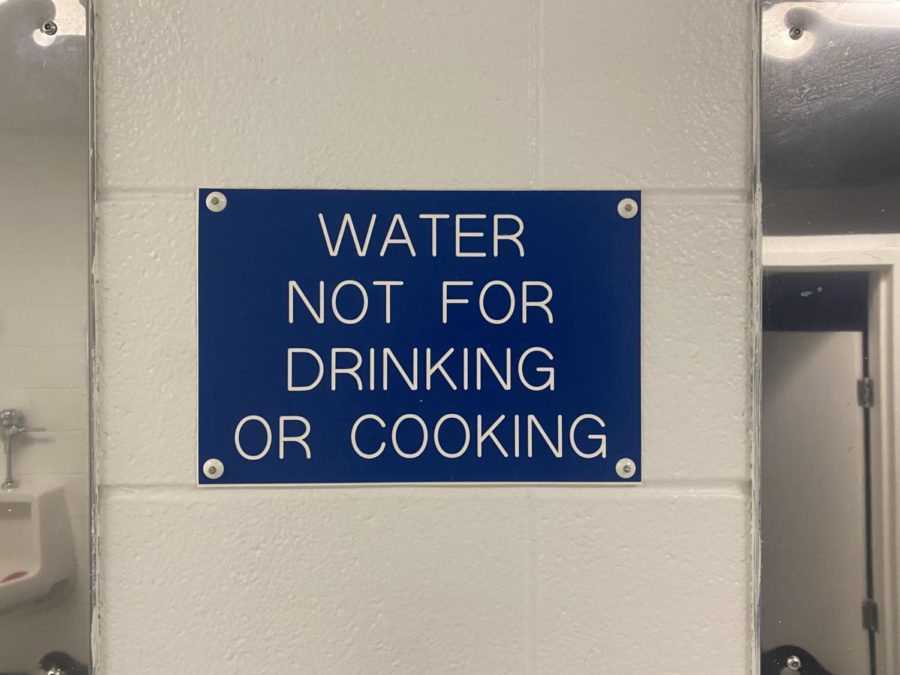Dolphins address school water quality
‘Water not for drinking or cooking’ signs are placed all around the school to warn students about potential contamination.
April 26, 2023
Water quality is an often overlooked health precaution that can easily affect one’s overall well-being. Contaminated water and poor sanitation can be linked to various diseases and illnesses.
Water comprises about 60% of the adult human body and 71% of the Earth, according to the United States Geological Survey. It is what keeps us alive and healthy.
“The water fountain by the girl’s bathroom in the math hallway has the best water, on the other hand, the downstairs English hallway tastes metallic,” said senior Akeeb Kalam.
Water at Ocean Lakes comes from the Virginia Beach Municipal Center, yet despite the water source being the same, students find that the water at each fountain tastes slightly different from each other.
“The reason why we put those signs there is because, let’s say somebody goes to use the bathroom and they touch the faucet or chemicals come in contact with the faucet; these germs can sit on the sink and may be dangerous to consume. The entire school’s water comes from the same source,” said building manager Joe Provido.
Signs reading ‘water not for drinking or cooking’ can be seen above all sinks inside of science classrooms and workrooms. Many students and staff are unaware of the reasoning behind these signs.
“People’s hands are likely to be most contaminated when conducting experiments or washing hands in the bathroom, so the sign warns people of germs that can sit on the sink,” said Provido.
Contaminated water and poor sanitation can be linked to various diseases and illnesses. Absent, inadequate or inappropriately managed water and sanitation services expose individuals to preventable health risks, according to the World Health Organization.
“I’m glad the water here is safe to drink,” said sophomore Kai England.



